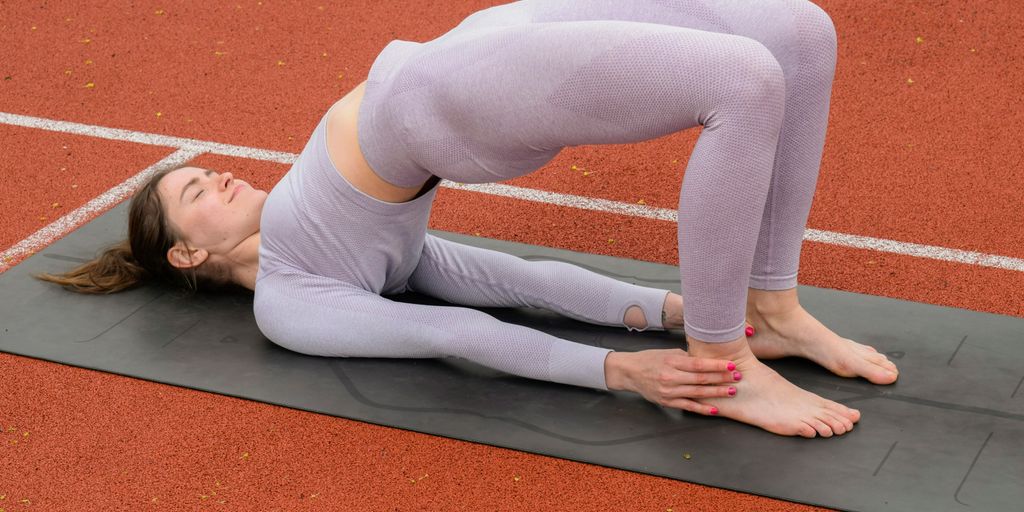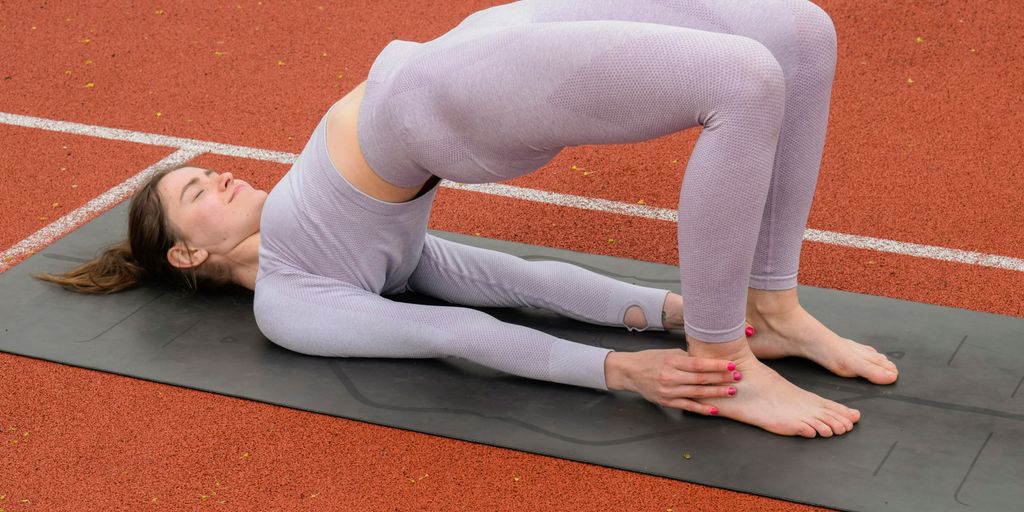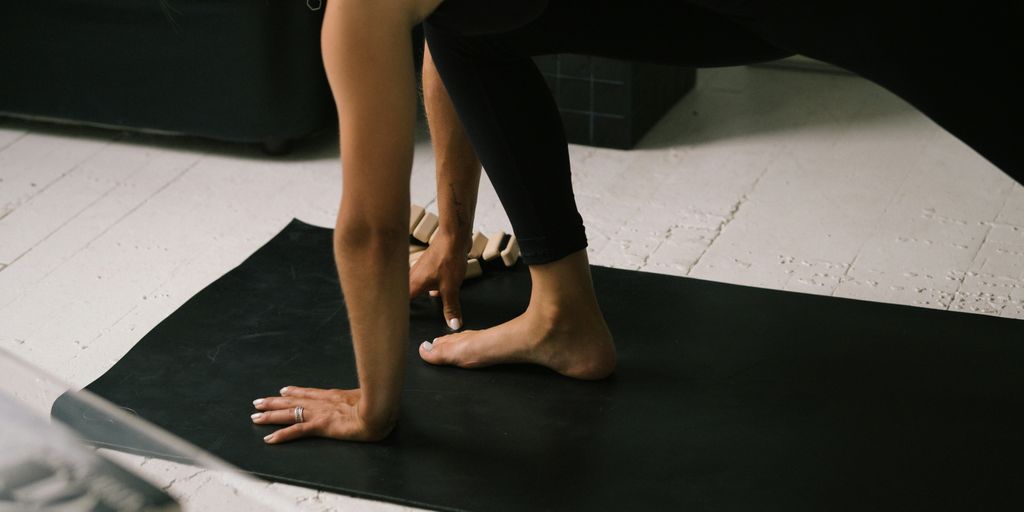
Mastering Your Position in Yoga: A Comprehensive Guide to Poses
Yoga is more than just a workout—it's a way to connect with your body, mind, and spirit. Whether you're brand new or have been practicing for years, refining your position in yoga is key to unlocking its many benefits. This guide breaks down poses for every level, from beginner to advanced, and explores how breathing and mindfulness tie it all together. Let's roll out the mat and get started.
Key Takeaways
- Yoga poses, or asanas, help balance your body and mind.
- Many yoga pose names come from Sanskrit and describe the pose's shape or purpose.
- Beginner yoga poses focus on relaxation and stability.
- More advanced yoga poses challenge your strength and flexibility.
- Practicing different yoga positions regularly can improve your strength, flexibility, and focus.
Understanding The Foundation Of Yoga Poses And Positions
Getting started with yoga means understanding the basic building blocks. These aren't just random stretches; they're carefully designed movements that link your physical body with your breath and your mind. Think of them as the alphabet of yoga – once you know them, you can start forming sentences, or in this case, more complex sequences. It’s about building a solid base so you can explore further without feeling lost.
The Significance Of Asanas In Yoga
Asanas, the physical postures in yoga, are your primary tools for connecting with yourself. They’re not just about flexibility or strength, though those are definitely benefits. Each pose is meant to prepare your body and mind for deeper states of awareness and meditation. Regular practice helps you build stability, improve your posture, and become more aware of how your body moves and feels. It’s a way to create a sense of calm and focus that can carry off the mat. A good yoga mat can really help with stability and comfort during these poses. yoga mat
Decoding Sanskrit Names And Their Meanings
Many yoga poses have names from Sanskrit, an ancient language. These names often give you a clue about what the pose looks like or what it’s meant to do. For example, Tadasana means Mountain Pose, and it’s all about standing tall and feeling grounded. Vrksasana is Tree Pose, which makes sense when you see how you balance on one leg. Learning these names can add a little extra meaning to your practice, like getting a secret hint about the pose’s intention.
Connecting Mind, Body, And Spirit Through Poses
Yoga is really about bringing all parts of you together. Different types of poses can affect you in different ways:
- Standing Poses: These help you feel steady and can really sharpen your concentration.
- Seated Poses: Good for winding down, these encourage you to relax and look inward.
- Inversions: Flipping upside down can give you a boost of energy and help you feel more confident.
- Twists: These are good for your insides, helping to clear things out and make you feel more mobile.
It's about finding that sweet spot where your physical and mental states are in sync. It's a journey, not a destination, and every pose is a step along the way.
Foundational Yoga Poses For Beginners
Starting yoga can feel a bit daunting, but focusing on foundational poses is a great way to build confidence and get a feel for the practice. These initial postures are designed to help you settle in, find your balance, and begin to connect with your breath. They're not about perfection, but about exploration and gentle movement. Think of these as your yoga building blocks.
Mountain Pose for Stability
Mountain Pose, or Tadasana, is where it all begins. This pose might look simple, but it lays the groundwork for balance and posture in yoga. Stand tall with your feet together, arms relaxed at your sides, and shoulders drawn back. Engage your thighs and core while rooting your feet into the ground. This pose helps you feel grounded and improves your overall body awareness. It's a great way to start your practice and connect with your breath. It's a good idea to practice this pose in front of a mirror initially to check your alignment.
Child’s Pose for Relaxation
Child’s Pose, or Balasana, is a go-to for relaxation and stretching. Sit back on your heels, stretch your arms forward, and rest your forehead on the mat. This pose gently stretches your hips, thighs, and spine while calming your mind. Use it as a resting pose whenever you need a break during your practice. For added comfort, you can place a pillow under your chest or knees, or even between your knees if that feels better. It’s a wonderful way to reset.
Downward Dog for Flexibility
Downward Dog, or Adho Mukha Svanasana, is a classic yoga pose that stretches the entire body. Start on your hands and knees, then lift your hips up and back, forming an inverted V-shape. Keep your hands shoulder-width apart and your feet hip-width apart. This pose stretches your hamstrings, calves, and shoulders while building upper body strength. If your heels don’t touch the mat, don’t worry—it’s all part of the journey. You can try bending your knees slightly to make it more accessible. This pose is a great way to get a feel for standing yoga postures.
Remember, the goal with these foundational poses is not to achieve a perfect shape, but to build a connection with your body and breath. Be patient with yourself.
Intermediate Yoga Poses To Enhance Your Practice

Moving into intermediate yoga means you're ready to explore poses that ask a bit more from your body and mind. It’s about building on that beginner foundation and finding new levels of stability, flexibility, and inner focus. Think of it as leveling up your practice, not just physically, but also in how you connect with yourself.
Balancing Poses For Core Strength
Balancing poses are where things start to get interesting! They're not just about standing on one leg; they're about finding your center, both physically and mentally. These poses really test your concentration and core strength. Think of it as a workout for your mind as much as your body. A good example is Warrior III (Virabhadrasana III). It's a tough one, requiring leg strength, core engagement, and serious focus. Regular practice can improve your posture and coordination. It's all about finding that sweet spot where you're challenged but not overwhelmed. Practicing these can really help you find your center, both on and off the mat. You can find some great examples of these poses in a yoga pose guide.
Twisting Poses For Detoxification
Twisting poses are great because they do more than just stretch you out. They can help counteract the effects of sitting all day. They're like a gentle massage for your internal organs. When you twist, you're essentially squeezing and releasing, which can aid in digestion and elimination. Plus, they're really good for your spine, improving flexibility and mobility. Here are a few to consider:
- Seated Spinal Twist (Ardha Matsyendrasana): A classic twist that's accessible to most levels.
- Revolved Triangle Pose (Parivrtta Trikonasana): A deeper twist that also challenges your balance.
- Revolved Side Angle Pose (Parivrtta Parsvakonasana): This one really opens up your chest and shoulders.
Twisting poses are not just about flexibility; they also help detoxify your body. They're a great way to release tension and improve circulation. It's like hitting the reset button for your body.
Seated Forward Bends For Hamstring Stretch
Seated forward bends are perfect for stretching the hamstrings and calming the mind. Paschimottanasana (Seated Forward Bend) is a classic pose that not only lengthens the back of your legs but also promotes relaxation. These poses are great for counteracting the tightness that comes from sitting all day. Remember to keep your spine elongated and avoid rounding your back as you fold forward. It's all about finding that balance between effort and ease, pushing yourself without overdoing it.
Advanced Yoga Poses For Mastery
Ready to really push your limits? This section is all about those advanced poses that take serious dedication and strength. We're talking about the ones that make you feel like you've conquered something big. It’s not just about showing off, though; these postures are fantastic for building resilience and a deep sense of self-awareness. They challenge your body and mind in ways that intermediate poses just can't. When you're ready to explore these, having a good quality mat can make a difference, providing the stability you need for these demanding postures. Check out the Morrissey Yoga Mat for a reliable practice surface.
Arm-Balance Poses For Strength
Arm balances are the pinnacle for many yogis, demanding a strong core, steady arms, and a focused mind. They truly test your ability to stay present and balanced. Holding these poses requires a deep connection between your breath and your movements. It's about finding that point of stillness even when you're defying gravity. These poses are excellent for building wrist and arm strength, as well as improving your sense of equilibrium.
- Firefly Pose (Tittibhasana): Strengthens arms, wrists, and the lower back, while also improving balance.
- Peacock Pose (Mayurasana): Known for its detoxifying benefits, this pose requires a strong core and stable wrists.
- Side Crow Pose (Parsva Bakasana): Works your obliques and tests your balance in a unique way.
Deep Backbends For Flexibility
Deep backbends are incredible for your spine, opening up your chest and shoulders. If you spend a lot of time sitting, these can feel like a revelation. They help counteract that forward hunch and bring a sense of spaciousness to your torso. Remember to warm up thoroughly before attempting these, focusing on your breath to support the movement.
- Wheel Pose (Urdhva Dhanurasana): A classic full-backbend that strengthens your legs, arms, and spine while opening your chest.
- King Pigeon Pose (Kapotasana): This pose deeply stretches the hips, thighs, and shoulders, and can also help improve lung capacity.
- Bow Pose (Dhanurasana): Stretches the entire front of your body, from the chest and abdomen to the thighs, promoting a feeling of expansion.
These poses require patience and consistent practice. Focus on the breath to guide you into the pose, rather than forcing yourself.
Challenging Inversions For Focus
Inversions flip your perspective, literally! They require significant upper body and core strength, plus a good dose of courage. Getting upside down can be a powerful way to build confidence and improve your body awareness. It's a great way to see how stable your shoulders are and how well your core is working. Mastering these can really change how you feel about your physical capabilities.
- Handstand (Adho Mukha Vrksasana): Builds whole-body strength, improves balance, and strengthens the upper body.
- Forearm Stand (Pincha Mayurasana): Tests shoulder stability and core engagement, offering a different kind of balance challenge.
- Scorpion Pose (Vrschikasana): Combines a backbend with an inversion, demanding flexibility, strength, and control.
Tips For Improving Your Position In Yoga
Using Props For Better Alignment
Props aren't just for folks just starting out; even seasoned yogis use them to really dial in their poses. Think of blocks, straps, and bolsters as helpful assistants. For instance, placing a block under your hand in Triangle Pose can help you keep your body in a good line without feeling strained. Straps are super useful for poses that need a bit more flexibility, like Seated Forward Bend. They let you focus on lengthening your spine instead of just trying to force yourself into the stretch. The trick is to use these items as tools to help you understand the pose better, not as a way to skip the work.
Listening To Your Body’s Limits
Your body is pretty good at telling you what it can and can't do. Really pay attention to how you feel when you're in a pose. A little bit of discomfort as you stretch is normal, but sharp pain is a signal to back off. Don't be afraid to change a pose to fit what your body needs that day. It’s also easy to look around the room or at pictures online and feel like you're not measuring up, but yoga is a personal journey. If a pose feels too much, take a moment to rest in Child’s Pose and then come back to it. Over time, you'll naturally get stronger and more flexible.
Yoga is about the journey of discovery, not about achieving a perfect shape. Celebrate the small wins and enjoy the process of learning what your body can do.
Practicing Consistency Over Perfection
Forget about getting every pose exactly right. What really makes a difference is showing up on your mat regularly. Consistent practice builds strength, improves flexibility, and boosts your confidence. Even just 10 minutes a day can start to show results. Try to build a routine that fits into your life, whether that’s a quick session in the morning or a longer one in the evening. You’ll start to notice changes in how you feel, both physically and mentally. It’s about making progress, not about being perfect. For a great mat to support your consistent practice, check out the Dora Szentmihalyi Jungle Yoga Mat.
Integrating Breath And Awareness Into Yoga Poses
The Role Of Breath Control During Asanas
Breathing is way more than just getting air in and out. It's like a superpower for focus and keeping steady during yoga. When your breath syncs up with your moves, it makes a rhythm that helps your body slide into poses easier. Always try to breathe through your nose when you're doing asanas. It's like your nose is a filter, cleaning and warming the air before it hits your lungs.
- Inhale deeply to prepare for a pose.
- Exhale slowly as you move into it.
- Maintain a steady breath throughout the hold.
Staying focused on your breath during yoga isn’t just a technique—it’s a way to ground yourself. When your breath is calm, your mind tends to follow, and things feel a bit more manageable. It's like hitting the reset button for your brain. This connection is key to a truly mindful yoga practice, helping you connect with your body on a deeper level. You can find more about mindful yoga and its benefits at [mindful yoga programs](mindful yoga programs).
Cultivating Mindfulness In Every Pose
Yoga isn't just about nailing the poses; it's about being present in your body and noticing how each movement feels. It's about breath control and awareness. When you move mindfully, you're not just going through the motions. You're actually paying attention to what's happening in your body and mind. This can help you avoid injuries and get more out of your practice.
- Focus on the sensations in your muscles.
- Notice any tension or discomfort.
- Adjust your pose as needed to find comfort.
By focusing on your breath and body, you can quiet the mental chatter and connect with your inner self. It's like giving your brain a vacation. Regular practice can lead to a greater sense of calm, balance, and well-being. It's not a quick fix, but over time, it can make a real difference.
Using a yoga mat can help you stay grounded and focused, allowing you to better connect with your breath and the present moment during your practice.
Keep Practicing, Keep Growing
So, we've gone over a bunch of yoga poses, from the easy ones that get you started to the really tough ones that make you think. Remember, yoga isn't about being perfect right away. It's more about showing up, listening to your body, and just doing what you can. Using props can help, and so can just breathing and staying aware. Keep at it, and you'll notice yourself getting stronger and more flexible over time. It’s a journey, and every time you step onto your mat, you’re making progress. Enjoy the process!
Frequently Asked Questions
What exactly are yoga poses, or asanas?
Yoga poses, or asanas, are special movements that help you connect your mind and body. They're like exercises that make you stronger, more flexible, and help you relax. Think of them as tools to feel good all over and focus better.
Why do yoga poses have names like Tadasana or Vrksasana?
Many yoga pose names come from an old language called Sanskrit. These names often describe what the pose looks like or what it's for. For instance, 'Tadasana' means Mountain Pose because you stand tall like a mountain, and 'Vrksasana' is Tree Pose, where you balance like a tree.
What are some good starting yoga poses for beginners?
For beginners, starting with poses like Mountain Pose (Tadasana) is great for balance and posture. Child's Pose (Balasana) is perfect for relaxing, and Downward Dog (Adho Mukha Svanasana) helps stretch your whole body and build arm strength.
Can I use yoga props like blocks or straps to help me in poses?
Yes, props like blocks, straps, or blankets can really help! They make poses easier to do correctly and help you stretch safely. They're like helpful tools to get the most out of each movement, no matter your skill level.
How do I know if I'm doing a yoga pose correctly or pushing too hard?
It's super important to listen to your body! It's okay to feel a little stretch or effort, but if you feel sharp pain, stop or change the pose. Yoga is about doing what feels right for you, not about being perfect or comparing yourself to others.
How important is breathing during yoga poses?
Breathing is a big part of yoga! Try to breathe slowly and smoothly through your nose during poses. When you focus on your breath, it helps you stay calm, focused, and connected to your body. It's like a secret weapon for making yoga feel even better.


